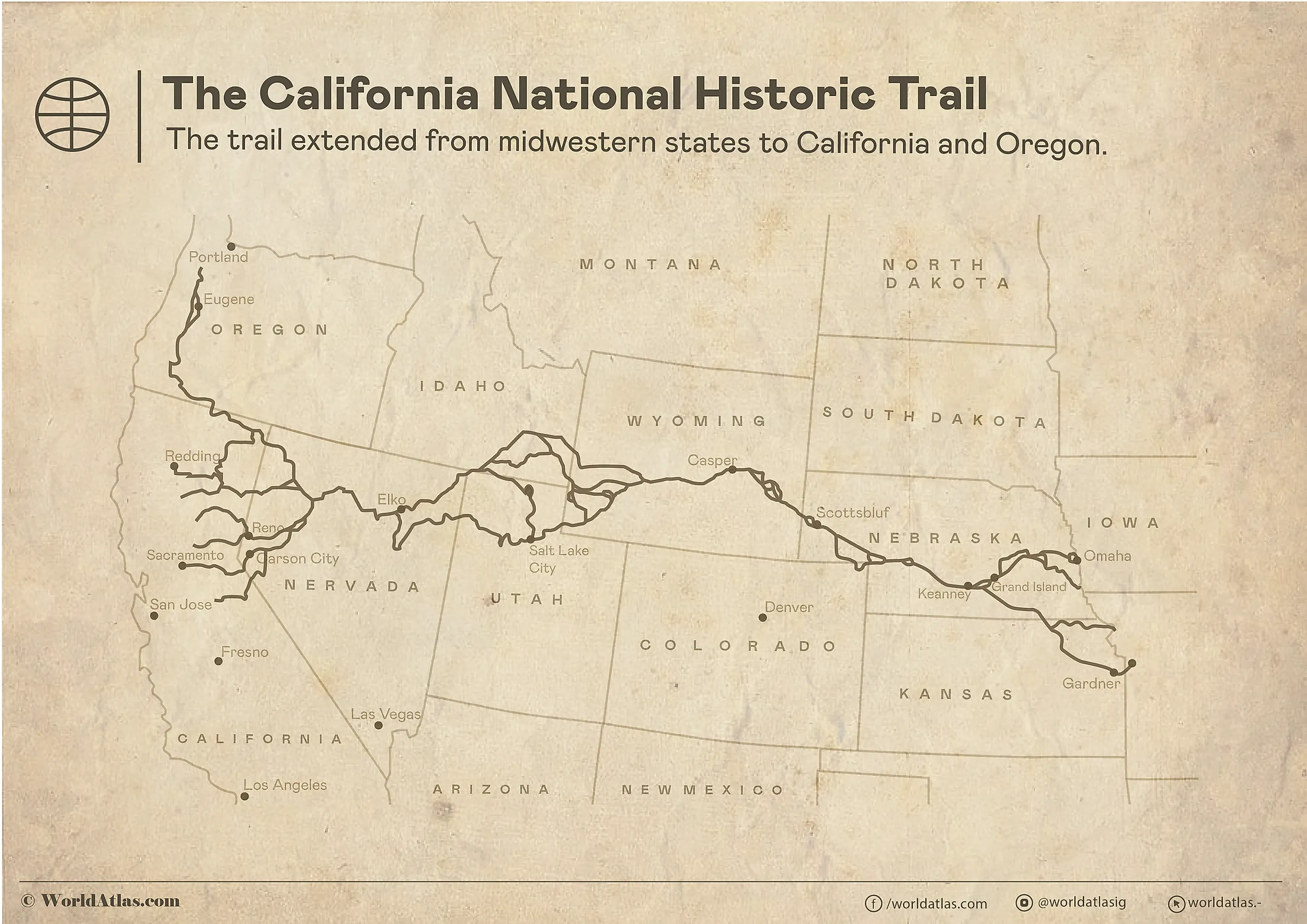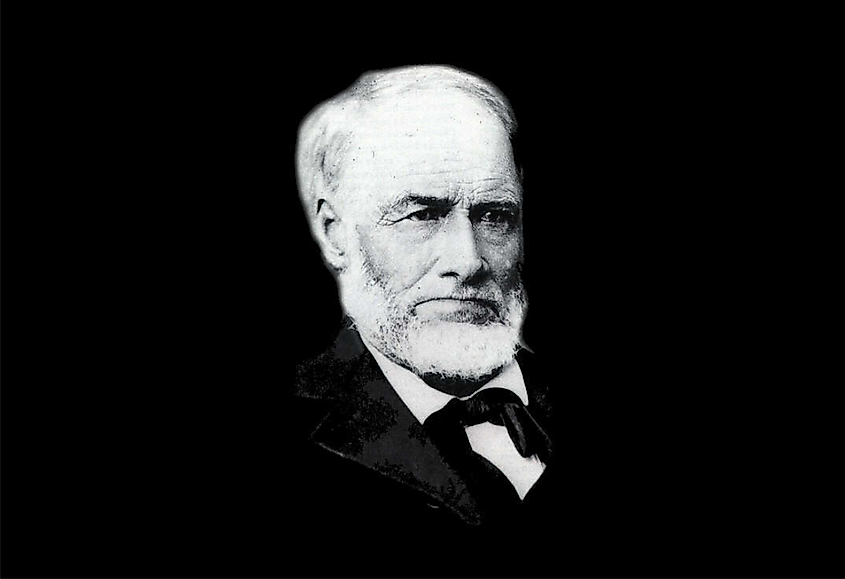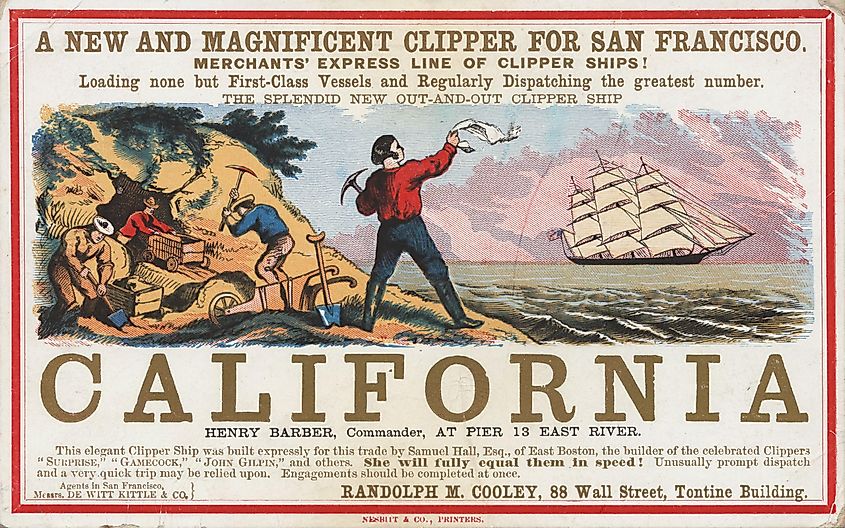
California Trail
When most people think of the westward movement in America, they think of the California Trail that provided emigrants with a pathway to California during the 1849 Gold Rush. It’s not that there wasn’t already another way to get to the West Coast from the East Coast or the Midwest; the Oregon Trail had existed since the 1830s. But the California Trail was the main pathway Americans took to get to California, the hotbed of perceived gold and riches.
The Spark of the Gold Rush

On January 24, 1848, a man named James Marshall discovered the first gold nugget at Sutter’s Mill near the American River. By March, the news had spread throughout California about Marshall’s discovery. In December, President James K. Polk gave a speech confirming that California was rich in gold. These events brought about the 1849 Gold Rush.
People from around the world made a mad dash for California in 1849, making it the greatest migration at that point in American history. Some sailed around Cape Horn, a few more came through Panama, and still more took the Santa Fe Trail, but emigrants coming from the Midwest and the East Coast traveled overland. It is estimated that 25,000 emigrants arrived in California in 1849 using the California Trail.
The California Trail had been used by the Bidwell-Bartleson company in 1841, but it wasn’t until 1844 that the Stevens-Murphy group proved that animal-drawn wagons could be successfully maneuvered through the formidable Sierra Nevada. This realization had profound effects on the future use of the California Trail.
The Journey of the Forty-Niners

The Forty-niners, a term that is credited to the emigrants who traveled to California in 1849 (and adapted later by the NFL team San Francisco 49ers), began their journey with their families and belongings bundled up on animal-drawn wagons from “jumping off” points near the Missouri River. They crossed the Great Plains, passed the Rocky Mountains, and then the path split either towards Oregon or California. Many Forty-niners nicknamed California an elephant because of the enormous journey full of hurdles that they had to undertake just to get there.
For those heading to California, the last stretch of the journey was especially horrific because they had to cross over the massive 40-mile desert to reach their destination. Many people suffered because they miscalculated the distance, weather, or geography of the region. In their haste to get to the goldfields, they ignored the warning signs left behind by previous travelers.
Through the long stretch of the journey, they often came across abandoned wagons, carcasses of dead animals and sometimes people from previous caravans, discarded household items, and rotten food. They found themselves facing death, deadly diseases - especially cholera, starvation, perceived or real threats from Native Americans, inclement weather, swollen rivers that were impossible to cross, and a mighty mountain range. Yet, they continued with their journey, some even on foot. Many of them made it through to California, but quite a few succumbed to a sad fate.
The Decline of the Trail and Legacy
California achieved its statehood in 1850. Traffic continued to arrive in the new 31st state until 1852 and other pathways to California remained open too. But by 1869, the California Trail had lost its appeal as the transcontinental railroad took over in the way people traveled. The trains were much faster than the wagons, making the journey back and forth to California less cumbersome for people.
Today, parts of US Highway 50 and Interstate 80 follow the original California Trail. You can visit the visitor centers and check out their educational exhibits or take an auto tour of the trail. Even though the original trail was abandoned, wagon ruts are still visible on parts of it. The California Trail that brought about the expansion of the American West continues to maintain its legendary status in American history.











